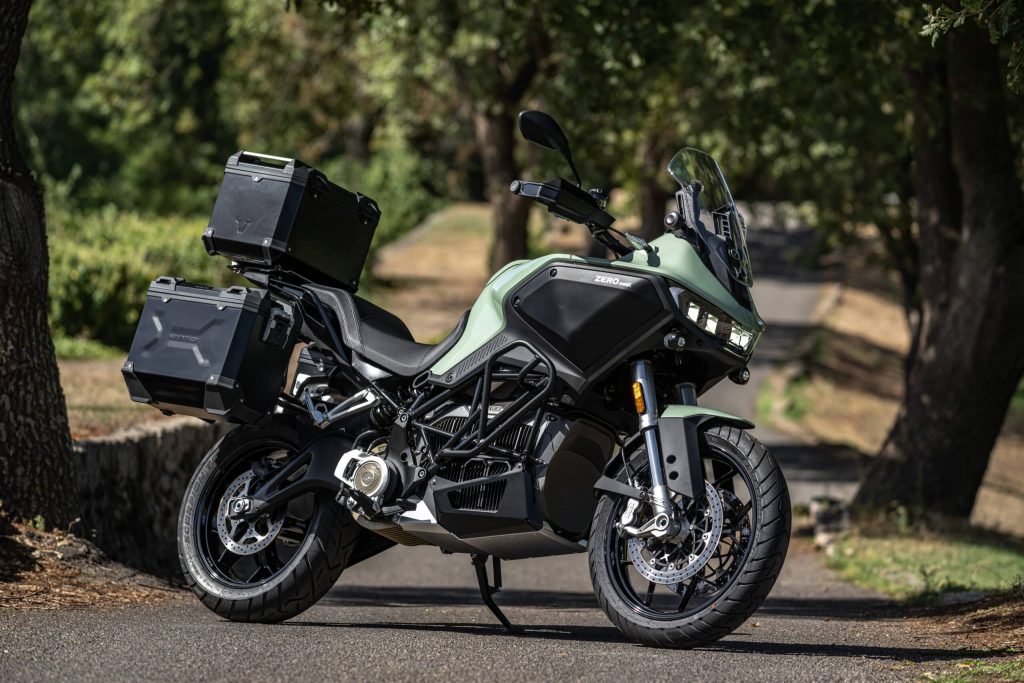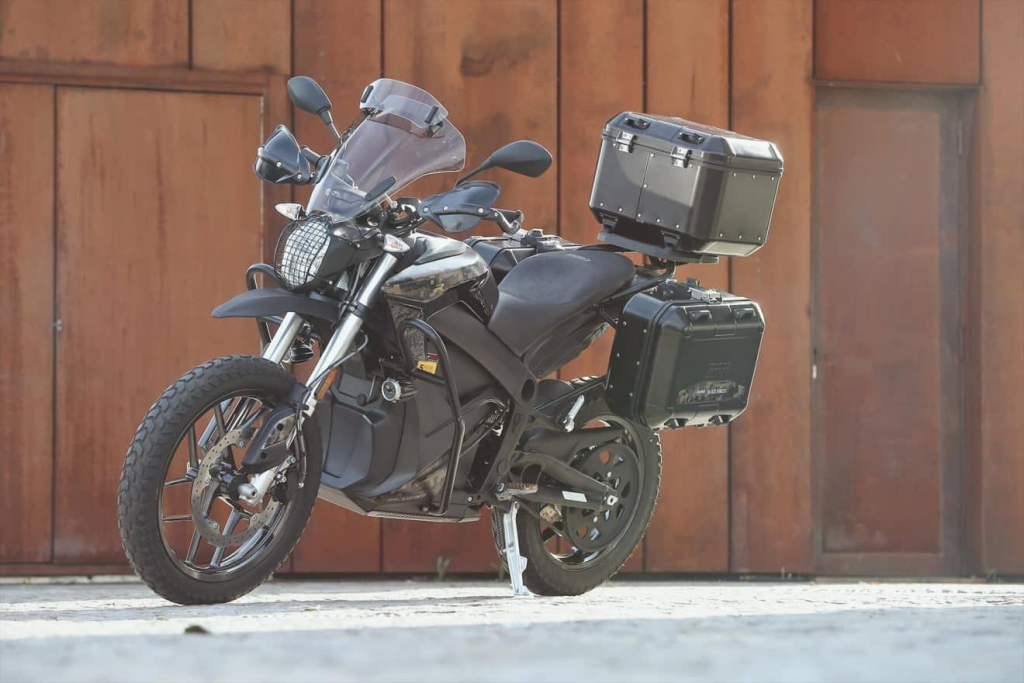
The nomenclature used to classify motorcycle genres is quite charming in its descriptive nature. A bagger, for instance, is equipped with bags, a naked bike showcases minimal bodywork, and an adventure bike is tailored for journeys to remote locations where one might need to persuade a local official to acquire three gallons of fuel siphoned from an agricultural aircraft. In line with this notion, adventure bikes are designed tall, boasting substantial suspension travel, capacious fuel tanks, and tires capable of traversing varying terrains. The Zero DSR/X seamlessly embodies these traits, with one exception—its fuel source, as it taps into the contemporary trend of electricity for propulsion. Nonetheless, this motorcycle boasts a remarkable capacity for energy storage.
In its base configuration, the DSR/X houses a lithium-ion battery with a usable capacity of 15.2 kilowatt-hours, ingeniously positioned within its trellis frame. An additional 3.0 kilowatt-hours can be incorporated by opting for the $3200 Power Tank accessory, which replaces the storage compartment in front of the rider with another battery unit. An onboard 6.6-kW Level 2 charger can replenish the battery from empty to 95 percent within approximately two hours, and this time can be halved with the optional $3000 dual charger (although it is incompatible with the Power Tank).
The range of the DSR/X extends to 180 miles in urban riding conditions, characterized by substantial regenerative braking and minimal high-speed aerodynamic resistance. However, maintaining a consistent speed of 70 mph reduces the estimated range to 85 miles. During a ride primarily focused on spirited travel along back roads, our experience yielded approximately 100 miles of range. Is covering a distance of 100 miles on a motorcycle a significant feat? Certainly. Nevertheless, adventure bikes are designed with the intention of embarking on journeys to distant locales rather than swiftly navigating a canyon loop and concluding the route back at your starting point within an hour and a half. Their essence lies in exploration, necessitating prudent planning before setting out on each adventure. During an excursion with fellow riders aboard a Royal Enfield and a Honda Gold Wing, the point of return was influenced by the state of charge of the Zero DSR/X’s battery—when it reached 50 percent capacity, the choice was either to head back home or calculate the distance to a functional Level 2 charging station.
Navigating Range Challenges and Performance: Zero DSR/X Review
The task of planning extended trips on the Zero DSR/X can prove to be unexpectedly intricate. I contemplated embarking on a journey from my residence to the North Carolina coast, but the endeavor was met with complications. Covering the 140-mile distance required more than one charge break due to the absence of viable charging options around the midpoint, creating a charger desert. Zero’s decision to opt for Level 2 charging compatibility for the DSR/X is likely due to its widespread availability. However, the landscape of charging infrastructure has evolved, with Level 3 fast chargers becoming increasingly common along highways and coastal corridors. The inclusion of both Level 2 and DC fast-charging capabilities, as seen in fully electric cars, could significantly broaden the range of feasible destinations. Nonetheless, motorcycles, being sensitive to weight and packaging considerations, tend to lean towards one charging standard over the other. For instance, the Harley-Davidson LiveWire One supports DC fast-charging but not Level 2 due to onboard charger limitations, while the Harley S2 Del Mar follows the opposite approach.
All three models, including the Zero, can be charged using a household outlet at a rate of approximately 1.0 kilowatt—a practical feature. During one instance, we plugged the Zero into a Level 1 charger at a fellow rider’s residence during a brief stop, elevating the charge by 5 percent. This proved significant as we returned to the starting point with a mere 4 percent charge remaining. After all, motorcycles are meant to ignite excitement, aren’t they?
The topic of range is a constant consideration, fueled by the Zero’s impressive acceleration that tempts riders to fully engage the throttle. The electric motor’s output of 100 horsepower is notable, but it’s the instantaneous surge of 166 pound-feet of torque that imbues the bike with a sensation of lightness despite its roughly 550-pound weight. While the bike offers more relaxed riding modes like Rain and Eco, we found ourselves predominantly in Canyon mode, which delivers assertive throttle response and ample regenerative braking for most corners. The Showa suspension adeptly absorbs potholes on rough terrain, but its 7.5 inches of travel sets it apart from the Honda Africa Twin’s 9.1 inches in the front and 8.7 inches in the rear. For those seeking off-road adventure, Zero offers knobby Pirelli Scorpion Rally STR tires and a chain drive option to replace the standard Gates belt drive. Additionally, a noteworthy off-road feature is reverse capability, enabling riders to maneuver out of situations they shouldn’t have ventured into in the first place.
Priced at $24,495, the DSR/X commands a premium over other offerings. This stands in contrast to the $18,874 price tag of the top-tier Africa Twin ES DCT and nearly double the cost of the $12,390 99-horsepower BMW F 900 XR. While incentives may come into play, the Zero DSR/X remains positioned as a premium choice within the premium motorcycle market segment.

